Guides • Understanding Publishing
Last updated on Apr 10, 2024
How to Publish a Children’s Book [+ Submission Kit]
There’s nothing quite like the thrill of writing a story that can captivate, educate, and entertain children. But before you can become the next Julia Donaldson or Dr. Seuss, you’ll need to get your story into the hands of young readers.
In this guide, we’ll take you through the process of publishing a children’s book — whether that’s by landing a traditional book deal or taking the initiative to self-publish.
How to publish a children’s book in 7 steps:
Before we start, download our children’s book query letter template for top tips on getting an agent's attention.
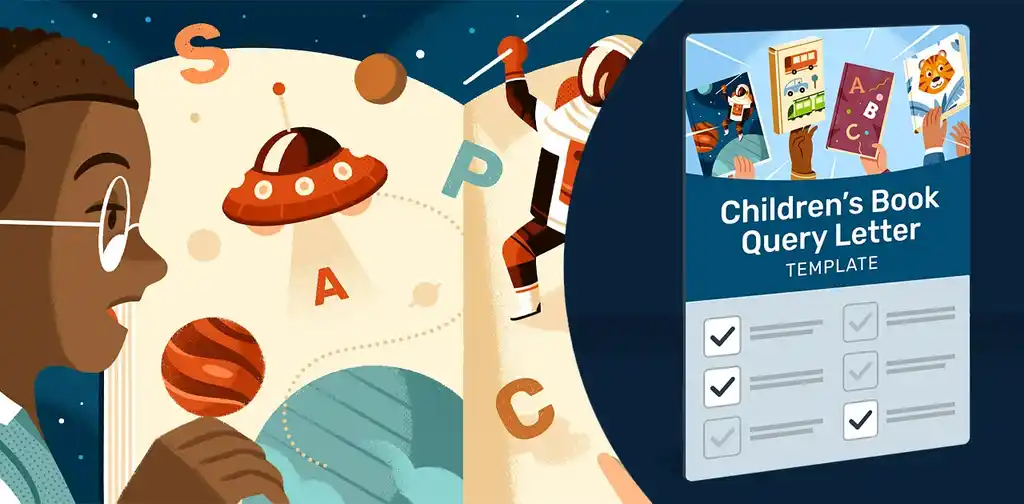
FREE RESOURCE
Children's Book Query Letter Template
Learn how to grab a literary agent’s attention with our free template.
1. Research your target market
Knowing your audience is essential when writing your book and crucial when you’re selling it. The first things a publisher will want to know are a) “Who is this book for?” and b) "How old are they?"
If you’re self-publishing, you’ll have to figure out your book’s target market and where you’re going to sell it. For context, children’s fiction is divided into five categories:
- Picture Books: under 6 years old
- Early Readers: 6+ years old
- Chapter Books: 7-9 years old
- Middle Grade (MG): 9-12 years old
- Young Adult (YA): 12-18 years old
Your book may have massive appeal, but nobody wants to hear that it is for "all children of all ages."
By identifying your book's specific readership, you'll also be better placed to edit your manuscript in line with industry and reader expectations.
Visit some bookshops
The simplest way to know what’s trending in children’s publishing is to head into a physical bookstore. Brick-and-mortar sales still make up a large chunk of the children’s market, as most parents (and kids!) prefer to choose those kinds of books in person.
So put on your detective cap and go on an intelligence-gathering mission to the children’s section of a large bookstore. See which authors are popular right now and what topics are trending. Are dinosaur books making a comeback? What about whimsical rhyming stories? Which art styles are the most prevalent? And so on.
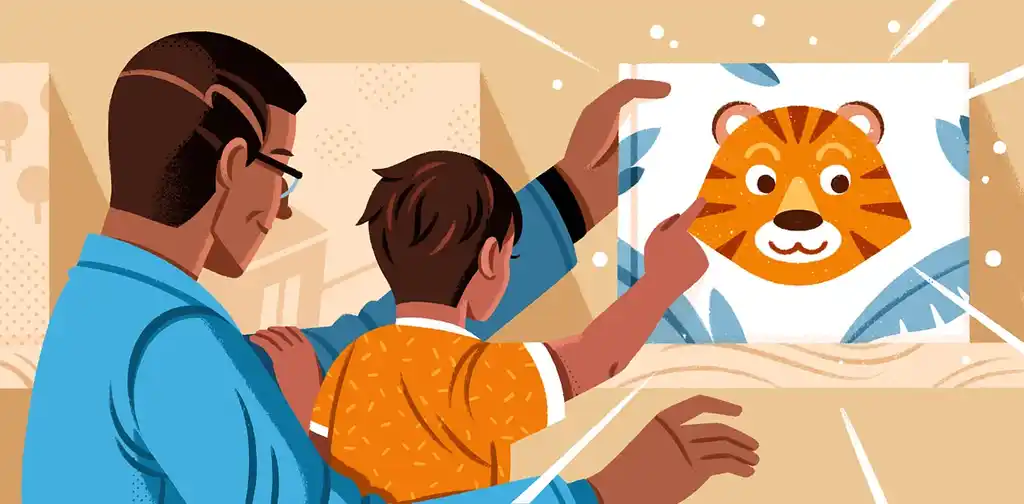
In publishing, we often talk about “writing to market,” which naysayers interpret as “cynically imitating successful books.” But really, it’s about understanding the tastes of readers and publishers. You want to come away with a deep knowledge of what your young audience has read before, so you can either play to certain tropes or subvert them.
📚Tip: Sign up for the Children’s Bookshelf Newsletter at Publisher’s Weekly to stay on top of the market (including the latest titles).
Stay within your category’s word count range
Publishers take word count seriously. They rarely have time to edit the books they acquire thoroughly, so if you’ve written a 5,000-word picture book manuscript, most editors will think, “Who needs the stress?” and give it a hard pass.
If you do choose to self-publish that jumbo-sized board book, parents will shudder at the thought of having to read it over and over and over if it becomes their child’s favorite.
Here is the average word count for the most popular children’s book categories:
- Picture Books: under 1,000 words
- Early Readers: 2,000 to 5,000 words
- Chapter Books: 5,000 to 10,000 words
- Middle Grade (MG): 30,000 to 50,000 words
- Young Adult (YA): 50,000 to 100,00 words
If you want to learn more about writing for each category in children's publishing, sign up for this free online course on Reedsy Learning.
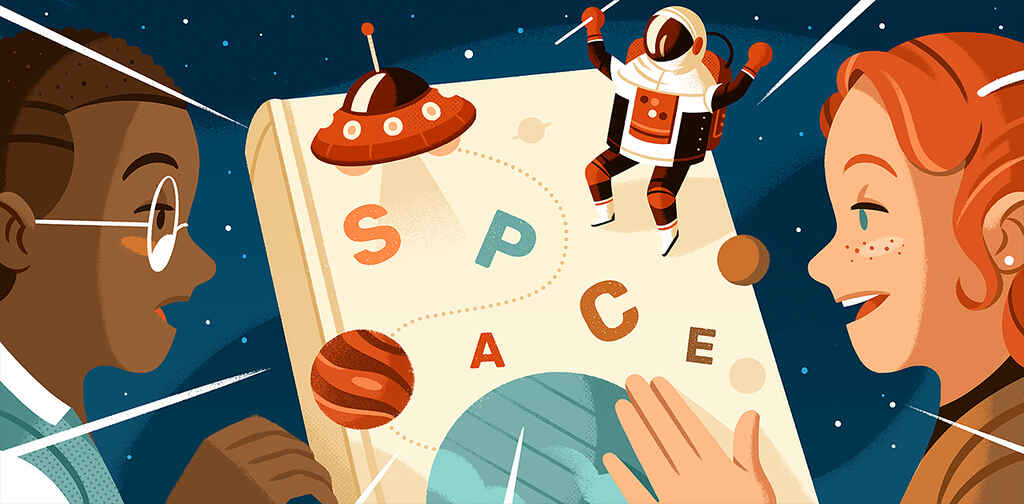
FREE COURSE
Children’s Books 101
Learn the ABCs of children’s books, from audience to character and beyond.
2. Edit your book to perfection
Let’s skip ahead a bit and assume that you’ve now written a fabulous manuscript that’s tailor-made for your target audience. Before you send it to the printers or mail it to agents, let’s make sure that it’s absolutely as good as it can be.
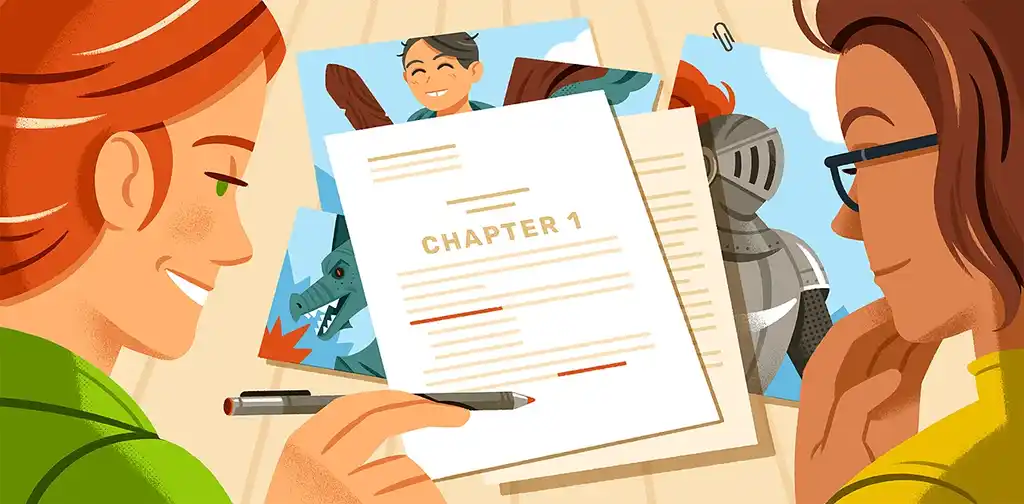
Get honest feedback
The great thing about having children as your beta readers is that they are brutal. Whether you’re sharing it with your niblings (nieces and nephews) or the child of a friend, kids simply won’t be able to lie to you if they don’t like your book.
Once you’ve exhausted the patience of your friends and their kids, there are some other, more structured places you can turn to for feedback as well:
- Society of Children’s Book Writers and Illustrators (Paid membership)
- Children's Literature Association (Paid membership)
- Children’s Book Authors (Facebook group)
- Children’s Book Writers & Illustrators (Facebook group)
Work with a professional editor
Whether you’re self-publishing or sending your manuscript out for consideration, you can always benefit from the help of a professional children’s book editor. Not only can they provide you with a fresh perspective, but they also understand the ins and outs of writing for kids — which is far from intuitive.
Children’s authors who work with editors have the added benefit of a lower word count, which makes the editing process a lot more affordable (and often relatively swift). On Reedsy, collaborations with world-class picture book editors start at no more than a few hundred dollars.
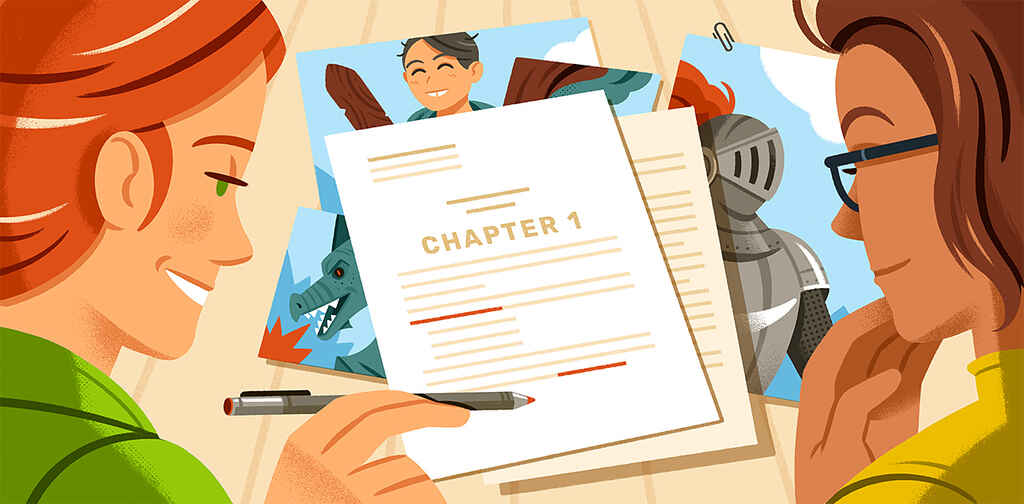
MEET EDITORS
Make your story sing
Work with a professional children’s book editor to take your book to the next level.
To get a better sense of average editing rates for middle grade, young adult, and other genres, check out the calculator in our editing cost guide.
3. Choose a publishing path
At this point in your journey, you’ll reach a fork in the road. Before you, there are two options for your children’s book: self-publishing or traditional publishing. You may have already decided which way you’re going, but just in case, here are the quick pros and cons of both.
Traditionally publishing a children’s book
This refers to the long-standing model of an established publisher working with an author to produce, illustrate, and distribute their book. This process often involves securing the services of a literary agent.
Pros:
- You won’t have to pay for production
- You’ll get an advance on royalties
- Marketing teams who can place your book in major stores
- Mainstream prize and award consideration
Cons:
- Less creative control (you might not pick your illustrator)
- Slower publication timeline
- Lower royalties per copy (5-20%)
- Very hard for first-time non-celebrity authors to land a deal.
Self-publishing a children’s book
With the advent of digital publishing, print-on-demand services, and easy access to top-class editors and designers, authors can now self-publish books with greater cost efficiency and quality than ever before.
Pros:
- Full creative control
- You can guarantee your book will be published
- Much higher royalties per copy sold (50%-70%)
Cons:
- You have to fund and manage the project yourself
- It’s harder to get your book widely distributed
If you’re still not sure which of these paths is right for you, take a look at our deep dive into the pros and cons of self-publishing.
If you’re going to try to land a book deal, check out the next step in our how-to. But if you’re already set on self-publishing, feel free to skip to step 5.
4. Find an agent or publisher [traditional]

The most straightforward way to sell to a publisher is to first secure a literary agent, a professional whose job is to sell your book to a publisher and negotiate the best deal on your behalf.
“Publishers who accept unagented submissions are pretty rare nowadays,” says Anna Bowles, a former commissioning editor at Hachette. If you want to be considered by most major and even medium-sized publishers, querying agents should be at the top of your priority list.
Here at Reedsy, you can find plenty of resources to help you find and query children’s agents, but here are some key points:
Only submit to agents who already handle children’s books
Too many authors don’t do their research before they query an agent. Don’t waste your time contacting agents who only handle adult titles or books that are way out of your category.
Top tip: Use Reedsy’s directory of experienced children's book agents to track down your dream representative.

FREE RESOURCE
Children's Book Query Letter Template
Learn how to grab a literary agent’s attention with our free template.
Know where your book fits into their list
If the agent already has a couple of unicorn-based picture books on their list, mention how your unicorn picture book will sit nicely alongside them. If they don’t have any unicorn books, say how your book can add depth to their list. Indeed, the children’s market is fairly saturated these days — so it’s often the case that the more your book stands out, the better!
🖋️
Are you ready for a literary agent?
Find out here! Takes one minute.
Smaller publishers sometimes accept direct submissions
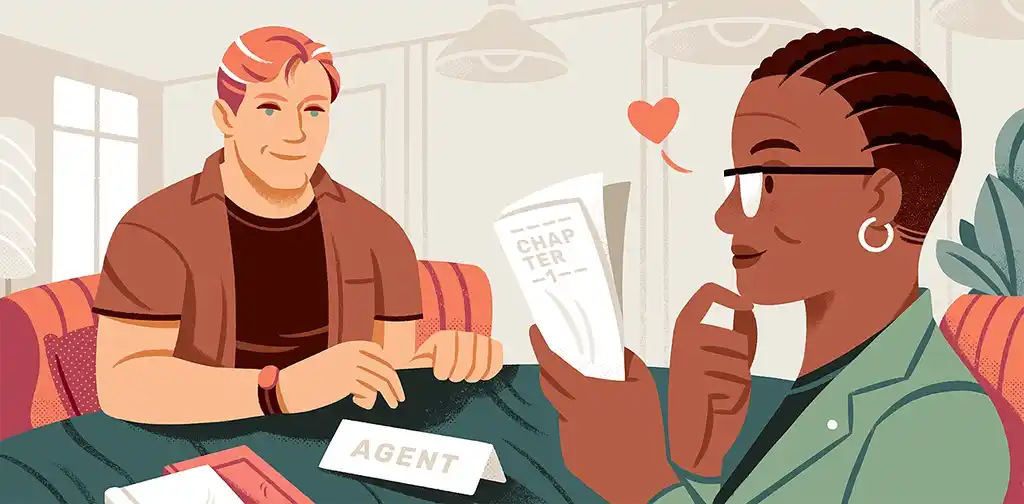 All that said, you can always find small presses that are on the lookout for new unrepresented (read: agent-less) authors. Here are a few resources to help you stay on top of your submission game:
All that said, you can always find small presses that are on the lookout for new unrepresented (read: agent-less) authors. Here are a few resources to help you stay on top of your submission game:
- Reedsy’s Children’s Publishers Directory
- Children’s Writer’s and Illustrator’s Market (book)
- Writers’ & Artists’ Yearbook (book, UK-centric)
- Picturebook Planet (blog)
- Authors Publish (newsletter)
The golden rule for contacting publishers is the same as it is for querying agents: always follow their submission guidelines. If they say, ‘don’t send a full manuscript,’ then don’t send a full manuscript — yes, even if it’s a short children’s book! If they want a book proposal that outlines the marketability of your book, find out what that means and deliver it in your submission.
Don’t send a fully-illustrated book
Unless you’re already a professional illustrator like Raymond Briggs (The Snowman) or Jon Klassen (I Want My Hat Back), don’t worry about illustrations. Don’t do it yourself, and don’t get your spouse, child, or college roommate to do it. Don’t even provide guidelines.
Publishers will already have a long list of illustrators at their disposal, and they’ll want a hand in choosing yours. Again, unless you are a pro illustrator who can do the job, submitting sketches or guidelines will only work to your disadvantage.
At this point in your publishing journey, there may be a lot of waiting involved. If you land an agent or a publishing deal, congratulations! Skip to step 6. But if you’re tired of waiting and you’re ready to roll up your sleeves and self-publish your children’s book, continue reading.
5. Seek out your perfect illustrator [self-publishing]
If you’re publishing a picture book, early reader, or chapter book, your readers will expect pictures to go with your text. In some cases, the artwork is going to be the main event — so make sure your illustrations aren’t an afterthought.
If you’re illustrating the book yourself, you can download our storyboard template to help you organize your pages. But if you want someone else to work on your book, you can check out our guide to finding children’s illustrators. It’ll show you how to use online designer marketplaces, then:
- Pinpoint the art style you want,
- Make a shortlist of illustrators, and
- Negotiate and collaborate with that illustrator.

Need someone to lend their artistic talent to your book? Check out the work of some of our favorite children’s book illustrators on Reedsy.
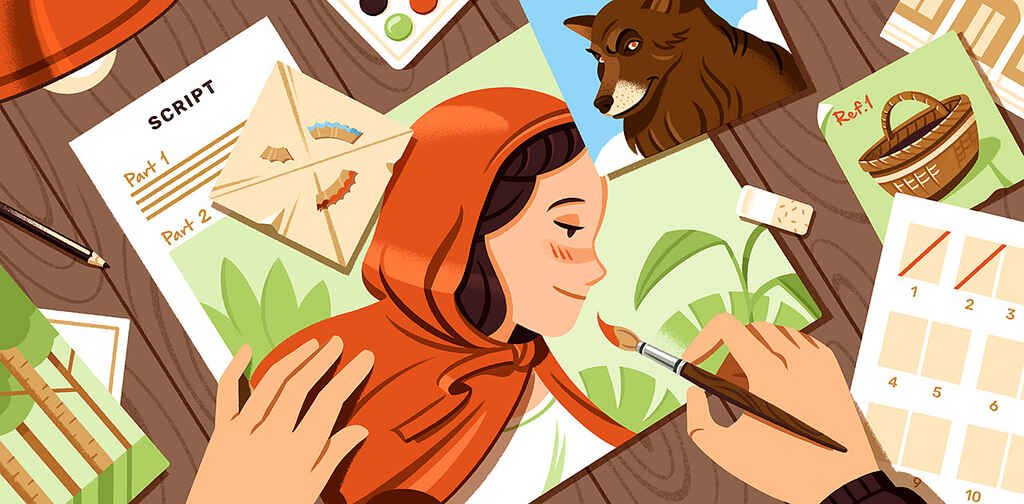
MEET ILLUSTRATORS
Bring your children's book to life
The best children's book illustrators are on Reedsy. Sign up to meet them.
Take care of the book cover and interior design
Depending on your illustrator’s experience, they may also format your book for you, combining your text with their artwork. If not, you have the option of formatting it yourself with the software mentioned above or by hiring a specialist typesetter.
In addition, you may even have a separate cover designer who can help you create a jacket that will draw your readers’ eyes. This will typically involve adapting an interior illustration and arranging the text on the front cover — not as easy as it sounds, which is why it’s ideal to get a specialist if your illustrator doesn’t have cover design experience.

By the end of this part of the process, your book will be ready to publish. So what happens next?
6. Set up your book with retailers
Once you have your final files ready, you’re finally going to publish your book — by which we mean that your book will be available to buy through retailers. Your own role in this will vary depending on your publishing path.
Traditional: Your publishers will take care of this
Publishers release a catalog of new titles available to booksellers every month or quarter. If you’re lucky, your publisher will also have a sales team that pitches to retailers (bookshops, supermarkets, etc.) and gets them to stock your book. As part of their negotiation, they may even convince those retailers to give your book a prominent placement during launch week.
Your publisher will also be responsible for listing your book on Amazon, Google Play, and every other retailer where they think your target buyer will discover your work.
Self-Publishing: Choose your printer and retailer
Most self-publishing authors prioritize digital formats. After all, ebooks cost nothing to set up, are priced more attractively for readers, and provide authors the greatest royalty split. This, however, is not the case with books for younger readers.
Print-on-demand technology has transformed publishing, allowing indie authors to print only as many copies as they sell. The main players in the game are IngramSpark and KDP (Amazon’s self-publishing wing). Both of these companies will print books to a decent standard. The cost of printing a 32-page full-color book is $4.20 with KDP, and roughly the same on Ingram, depending on how you customize it.
Blurb is another service that offers greater customization and a higher-quality product — but with a base cost twice what you would pay KDP. The upside is that they offer generous discounts once you start ordering in bulk.
For simplicity’s sake, many first-time authors in the US and UK choose to publish with Amazon’s KDP. That’s where the majority of their sales revenue will likely come from, and they can manage their physical and digital sales through just one platform.
Self-Publishing: Set up your book’s product page
Once you’ve chosen your printer and retailer, you’ll also have to set up your product page. We’d encourage you to look through this guide to writing book descriptions on Amazon and remember that your target audience will be parents and friends of the family — so make it obvious what sort of kid is going to be delighted by your book!
If it’s packed full of fun animal facts, mention that! There will be plenty of buyers specifically searching for animal picture books, so make sure they know your book is perfect for them. Or if you’re publishing a book for older children, you can use comp titles to appeal to its target audience — for example, “The Magic Tree House series meets Diary of a Wimpy Kid.”
7. Get ready for publishing day!
One of the biggest publishing myths is that if you’ve landed a book deal, your publisher will pull out all the stops to market your book. The truth is that most authors will be expected to do their own marketing and publicity — and that authors who take this role seriously tend to be more successful.
Most of the time, marketing a children’s book is the same as marketing any other type of book. There are dozens of great book marketing ideas for you to mine, from creating a mailing list to running promotions with other authors. However, there are also a few marketing tactics that can prove especially effective for children’s book authors:
Reach out to specialty shops
Gift shops are an especially fruitful selling opportunity for children’s authors. If your book is about a real-life place, idea, or historical period, look for museums and tourist attractions related to that topic. For example, a writer who’s published a picture book about Betsy Ross should contact the hundreds of Revolutionary history sites across the US and try to get their book stocked in their gift shops.
Work the libraries
Of course, most parents don’t just buy every book under the sun — the majority still head to their local library.
Every book of yours that’s in a library is effectively free advertising. If a parent sees a picture book at the library that’s vaguely suitable for their child, they’ll probably borrow it. If they like it, they might seek out other books the author has written and buy those. Then they’ll tell their friends, who will also borrow it for their kids, buy other titles published by the same author, and recommend it to their friends. Thus, the virtuous cycle is complete.
To get a better idea of how to get your book into the library system, check out this free Reedsy course on the topic. But if you’re too impatient to take the course, we can reveal that to get your books into a library, you’ll need a lot of good reviews — which brings us to our final crucial topic of review hustling.
Look to online communities for influencers and street teamers
Blogs, Instagram, Reddit, TikTok. These days, most parents of young kids are millennials or, gasp, zoomers (Gen Z). As a result, they will rely on the internet for almost any kind of recommendation (another generalization, admittedly).
Share pictures of your book on Instagram using relevant hashtags — ones that either deal with your book’s topic (#unicorns #firetrucks) or tap directly into your audience (#mommylifestyle #picturebooksaremyjam).
Consider starting a TikTok channel where you cover topics related to your book — or just talk about other children’s books! BookTok, as it’s called, is no joke and has helped countless new authors blow up.
Visit some schools
Most schools will welcome visits from authors — in fact, some schools even set aside an annual budget for it. So why not get in touch with an administrator or a librarian and ask what you can do for them? And if you’re doing the school visit for free, children’s author Eevi Jones suggests taking the opportunity to sell some copies.
“Follow up your first email with a phone call to let them know that you visit local schools for free. In return, the school can send slips home offering the chance to buy signed copies of the book.”
Of course, there are plenty of other marketing avenues to pursue — many of which you can learn about on Reedsy’s free children’s book marketing course.
Finally, have fun! Writing a children’s book is supposed to be a joyous act of creativity, and publishing it is simply the culmination of that process — an opportunity to share your ideas, characters, and stories with a hungry audience of readers. We look forward to seeing your book on our shelves!



11 responses
Angel L Chu says:
28/10/2017 – 12:28
Began writing seriously this year and am querying now. Pitch contests are also a great way to find the right agent match! I've had a few requests from them but still no agent match...enjoying the ride in the meantime. Thanks for a great post!
James W says:
24/01/2018 – 02:16
Awesome article, love the Roald Dahl quote, I think some of the earlier versions/extracts from them have actually seen the light of day. If anyone's thinking of going the self-publishing route and putting together a full book with illustrations etc. there's a great guide over at https://kindlepreneur.com/how-to-write-a-childrens-book/ from Eevie Jones.
Mal says:
28/10/2019 – 06:10
Fantastic Article kept my interest.... but I do have one major question, when sending a manuscript for review.... how can you protect your work from being plagiarized, or more so copied and not knowing as you haven't had a reply....
↪️ Martin Cavannagh replied:
29/10/2019 – 10:10
This is a concern that a lot of new authors have and, to be honest, it seems to be largely unfounded. If you are querying a reputable agent or submitting your manuscript to a known publisher, you will be pretty well protected — as there's an email paper-trail. That and the fact that even a whisper of intellectual property theft can tank an agency or publisher's reputation will mean that they would have to be pretty brazen to steal your idea. In the end, though, a book is almost always about the author's execution. Chances are that they've seen an idea like yours before. It's how you plan to deliver on the idea that will intrigue a publisher.
↪️ Des replied:
31/10/2019 – 04:11
I'm not sure how true or valuable this is but I had a creative writing teacher tell me once that you can send a copy of your story to yourself. Just drop it off at the post office and have it shipped to your address, dont open it. Apparently the date on the package is what is important, that way if you ever need to, you can prove that your story was written first.
↪️ Martin Cavannagh replied:
01/11/2019 – 12:18
They often call this "poor man's copyright" and I think the idea has mostly been debunked. We talk about it in our post on copyrighting a book.
ridhi sarda says:
26/11/2019 – 13:26
Hi, I'm an aspiring author. Any idea on how to self publish a children's board book?
ridhi sarda says:
26/11/2019 – 13:26
Hi, Any idea on how to self publish a children's board book?
↪️ Martin Cavannagh replied:
28/11/2019 – 10:14
Board books can be prohibitively expensive for self-publishing authors. There aren't any good print-on-demand solutions for this format that we can recommend, though if you're willing to pay for a larger run, you might be able to find some printers that can do it for you. Though after that, you'll still have the problem of warehousing your stock yourself.
Cindy Baier says:
10/03/2020 – 18:36
In publishing a book you never mention anything about getting it copyrighted. Where and when do we do this to protect our work?
↪️ Martin Cavannagh replied:
11/03/2020 – 10:50
We have a post that covers copyright (when and if you should register it, etc.): https://blog.reedsy.com/how-to-copyright-a-book/ I hope you find it useful!